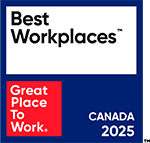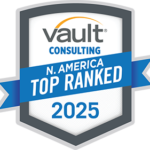
Article
The New 4Ps that Power Brand Value: Why People, Process, IP and Partnership Must Be on Every CEO’s Radar
February 4, 2021
David Kincaid, Level5 Strategy founder and author of The Brand-Driven CEO: Embedding Brand into Business Strategy, talks to Customer First Thinking Podcaster Stephen Shaw about why the New 4Ps boost profits and strengthen market longevity.
David met with Stephen Shaw recently to discuss a brand model based on these four verticals that today’s CEOs should adopt if they want to drive growth and stay competitive. Read Part 2 of the interview’s condensed highlights below.
Steven: I’ve read somewhere that only around three percent of board members have a marketing background. What you’re suggesting in The Brand-Driven CEO is that a similar ratio applies to CEOs. Your book, which is aimed at CEOs, presents a model for them to emulate. Can you provide a brief overview of that model? What do you think are the main pillars of this new branding model that you’re recommending?
David: What the book tries to do is say this: “Even if you don’t come from a brand management background and pedigree, it shouldn’t take away your accountability in managing the brand as an asset.” And here’s a simple kind of a roadmap, if you will, on how to go about doing that.
As for the branding model, we did a lot of research globally, not just in Canada, with a whole range of CEOs. Many of these CEOs didn’t come with a brand pedigree, but had developed strong global brands. And these weren’t one-offs. They had at least five years of acknowledged, continued growth. We talked to them about their role and their contribution in making that happen. It came down to six success factors that a lot of them talked about. They may have referred to them differently, but they were all saying the same types of things. Without getting into too many of the details that are in the book, what drives these success factors is the CEO’s ability to articulate a purpose, vision and a direction for the brand – not for the stock price, but the brand.
These individuals ask fundamental questions such as, “What business am I really in?” They acknowledge that the answer isn’t always trapped in what they produce or sell. It’s more about, “What benefits the customers and what value are we bringing to a fast-changing market?” So, it comes down to their ability to articulate a stronger sense of purpose, vision, and long-range strategic direction and then aligning their teams around it, getting them excited and inspired by that direction. They must also be able to communicate all this in a compelling way and understand the power of storytelling. So, the six success factors are in those three broad bundles. The other fascinating thing that we discovered, which is the other part of the branding model, is that these individuals operated with what I ended up calling the New Four Ps. They’re different from the four Ps of marketing, which have been around since ’50s.
Steven: Products, price, and place.
David: And promotion. But those are the four Ps of marketing. So, as I say, your brand isn’t marketing. That’s what your marketing CMO should focus on. The four Ps of brand management are people, process, IP and partnerships, and they’re linked to the vision, purpose and CEO’s ability to inspire. First, as a company, you attract a certain type of individual who has certain competencies, soft skills, hard skills and technical skills. Then, the leadership structures these employees. Once people work within the right type of an organizational structure, that structure enables these competencies to deliver 150 per cent of output. You create a culture that allows that to happen.
As you can see, people’s roles have a lot of moving parts to them, which the HR department has no accountability for. These are the things that the CEOs must take personal accountability for. Processes, in other words. There are always two or three core processes that are crucial for an organisation. Once I know what benefits I create in the market, not what I produce, what do I need to be able to deliver on my promise to the market? These core processes are needed to map, in detail, the delivery of that promise at world-class levels. These individuals are not trying to be great at everything. But given our promise to the market, if we’re not great at these three things, we’re dead.
Intellectual Property is one of the four Ps I played with in the book. But 72 per cent of the value of the S&P 500 last year was driven by intangible assets, not hard assets like buildings, facilities and delivery trucks. In other words, patents, trademarks, copyrights, brand value and asset value. These intangibles have become critical in creating and driving brand value, which is why it’s important how you focus them and what you focus them on, including what you do with them. Again, I’m not talking about the legal process. Because, if you don’t view the soft assets as critical to your brand and its value, then you’re missing, really, the core driver to the value in today’s marketplace.
Steven: It surprised me when I read in The Brand-Driven CEO that companies could take those intellectual assets so cavalierly and not protect them with their lives.
David: It’s scary. I came across organisations that the market has very high respect for, but which have no process around managing or leveraging their intangible value. Think about what this means in today’s security-driven world – the risk of being hacked. If your product is driven off of a recipe or a patent from a technology standpoint, and you don’t have it solidly protected before you even start to leverage it, boy. It’s your responsibility as the CEO to make sure that that important value driver is protected.
The last “P” I address in the book is partnerships. Companies are, for all the right reasons, past the stage of having to do everything in-house. When I started at General Foods everything was in-house. There were General Foods kitchens that did all their own product development. We had a huge legal department. We had a whole training division. We had a planning group. We had massive overhead partnerships that enabled us to bring our brand and its intangible value into the market. Today, companies rely on strategic partnerships that help bring added value to what companies create already, which is why they have become the lifeblood of many top S&P 500 brand-driven organisations.
Steven: To pick up further on our conversation about partnerships – you observed that various platforms were being created where multiple partners collaborated on serving a specific segment of the market. Then these platforms started to become a big part of companies’ business models going forward. How did organisations come to encourage the creation of these platforms?
David: It was encouraged in the areas of innovation and creation, protection and delivery to the market. An organisation could, for example, issue a licensing partnership in a marketing and sales department, or in any of the departments I just mentioned. Some organisations have partnerships with companies that, on the surface, appear to be in direct competition with one another. While they may be direct competitors, they’ve decided to collaborate in specific brands and areas of business. BMW has a range of technology partners that they work with to develop the next generation of smart cars without disclosing to them its core brand essence of performance.
Steven: The other big “P,” which is embedded in one of your 4Ps, is this idea of purpose. I want to focus a bit on that because brand purpose is the topic du jour just about everywhere these days. But your definition of purpose – and correct me if I’m wrong here – has to do with the core benefit that an organisation delivers to its customers. It runs contrary to today’s popular definition of purpose, which is centered on a higher-order role in the world, a change-the-world purpose. Do you make a distinction between these two things? Are they one and the same? Does one ladder up to the other? How do they work together?
David: In many cases, they ladder up. But purpose is a big heading. It’s a big umbrella. What my research for the book has revealed is that successful CEOs are very good at articulating purpose. In some cases, that purpose is focused on the benefit of stakeholders within the sector they’re competing in. But it could also be an almost self-directed purpose such as, “We do business in order to save the planet, or improve the rights and diversity of all genders, involve people from all parts of the world, eliminate barriers, etc.” An organisation’s purpose can be very self-focused or very world-changing. The fact remains – all successful companies have one. It’s not there to produce widgets and sell more widgets at a higher price. Companies pursue a particular purpose for a higher reason. And that, to me, was the “a-ha” in all of this.
The higher-order purposes are going to become even more important, given the complexity of the world we live in, and the emergence of the pandemic. It’s going to become a stronger focus for many organisations because they’ve come to realise that they can do business in different ways. They can create value in ways that they had never thought of before. They can engage a range of stakeholders that they’ve never really had been able to. So, the expectations for having us all come out of this in a better place and ensuring a similar scenario doesn’t happen again will be that much more important. Just think about it.
Who would have thought a year ago that attributes such as cleanliness, safety, control and navigation would become driver attributes that create value for a grocery store? A year ago, as a consumer, I wanted variety, selection and nutrition, right?
Steven: Consumer Packaged Goods brands such as P&G have done very nicely as the result of the pandemic. Clorox has been off the charts as their products have been swept off the shelves. At the same time, what I’ve read is that brand loyalties have been tested. The frugal consumer is now scanning the shelves for generic, cheaper options without paying as much attention to the brand. If you’re in a category that’s popular because of the concerns over health, that’s great. But if you’re on the periphery of that, the brand has been tested in a way that perhaps it’s never been tested before.
David: Yes, and I do agree with that. When you’re stuck at home having to order everything online, the pessimists among us would say that the current situation is testing brands and that many of them are failing consumers. The pessimists will also say that consumers have sidestepped brand loyalty and that all they’re looking for is convenience and price. Well, OK, that will happen if companies let them. You mentioned Clorox. Look at what they’ve done to leverage the equities of their brand in ways that consumers go, “Well, that makes a lot of sense and I’ll pay for that.” As for the pessimists, I personally don’t have a lot of time for them. I think that brand management is in a glass-half-full mode. Brands have never been given a better opportunity to evolve and create value in new ways than right now as we’re emerging out of the pandemic.
Steven: Yeah, I couldn’t agree more. You’re making a case that brands can be more resilient by playing a larger role in people’s lives and being more meaningful to them by creating an emotional connection. But that goes back to the idea of brand purpose because, without a brand purpose, companies don’t have the license to do that.
David: This is why, if you think of your brand as an asset, you can look at its defining attributes, core capabilities and the 4Ps, and say, “How else might I be able to use these?” I recently spoke to the owner of a craft distiller in Niagara Falls. Their business has done okay. People are at home and so they’re drinking more. But they’ve got lots of unused capacity. Their product head and manufacturing head got together and said, “How do we use this underutilized capacity?” And the distilling head said, “One of the byproducts of distillation is alcohol.”
Steven: Hand sanitizer.
David: They have a packaging line that can put liquid in bottles or containers, sitting there doing nothing. Suddenly, they’re still producing their craft gins and vodkas, but they’re also producing this other type of product. Will that become a whole new business line for them? I don’t know. But it showed them that if they stepped back and looked at their brand and its business system, there’s a whole bunch of hidden ways that they can create and drive value in the market.
Steven: We’re on the cusp of transformation and you’ve alluded to a post-pandemic wave of disruptive change as consumer attitudes change and habits follow. Who in the organisation is responsible for connecting the dots between these emerging trends and extrapolating hidden opportunities? Who is responsible, if not the marketing department? Marketing professionals are really the only ones holding the ball these days with respect to the customer. Who steps up and sets the strategic direction based on an understanding of where the trends will lead?
David: The point I make in the book is that it’s the responsibility of the C-suite, so, senior leadership. I don’t care whether that’s your head of manufacturing or your head of marketing or your head of sales. The leadership team is the one that comes up with different perspectives and skill sets – if they’re following the guardrails of the brand and its purpose. They’re the ones who should be putting the dots on the table. If they’re a good, well-performing team led by a good CEO, then they work together to connect those dots and drive sustainable growth.
The Brand-Driven CEO: Embedding Brand into Business Strategy reveals why most business leaders misunderstand, overlook and under-utilize the value of their brands. Find out more here.



